In July 2016, EPL made first trips to the Carpathian region in order to reveal violations in the forestry management. The first object of the survey was Burkutska forestry of the state enterprise “Verhovynsky forestry” (Ivano-Frankivsk region Verkhovyna district) where we analyzed the situation with forest logging and its impact on mountain ecosystems.
From Burkut we approached the local waterway – the picturesque river Black Cheremosh.
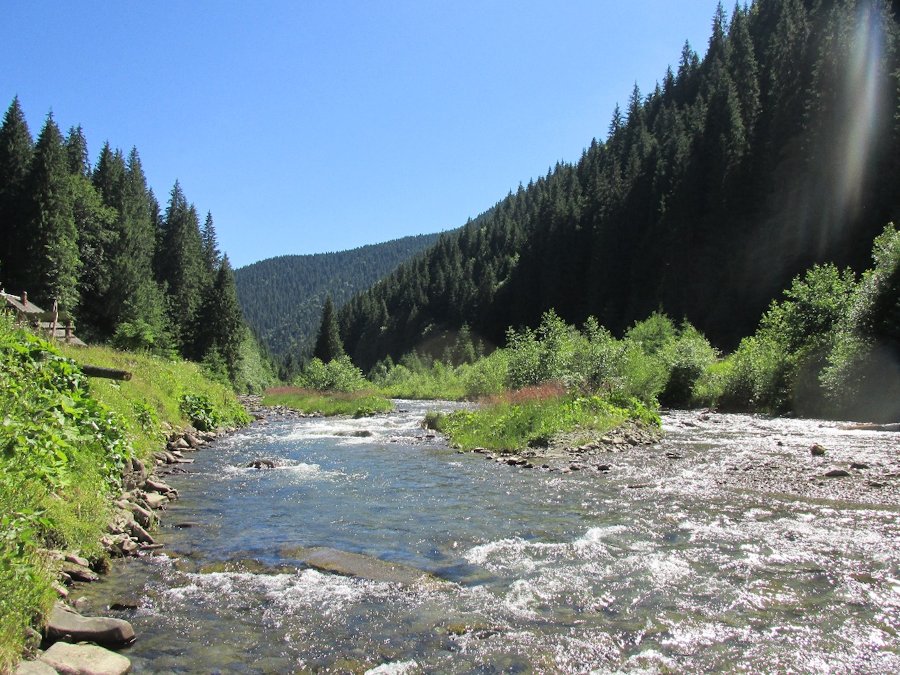
The river bed is included into the hydrological reserve of local importance “Black Cheremosh with the coastal protective strip” and is protected as a habitat of a number of fish species listed in the Red Book of Ukraine. Despite the fact that these are outskirts of the village, not some wild place far away from people’s eyes, we detect a violation here. According to Art. 26 of the Law of Ukraine “On Nature Reserve Fund”, any activity not aimed at realization of the objectives and tasks of the reserve is prohibited in the territory of the reserve. However, transportation of felled forest (timber trailing) is done via the river bed of the Black Cheremosh. During our observation, we recorded timber trailing down the river 9 times! As you can see in the photo, the road for timber tracks crosses the river bed several times. In such a situation, destruction of the river beds and river pollution with fuels and oils inevitably worsens the living conditions of endangered species.
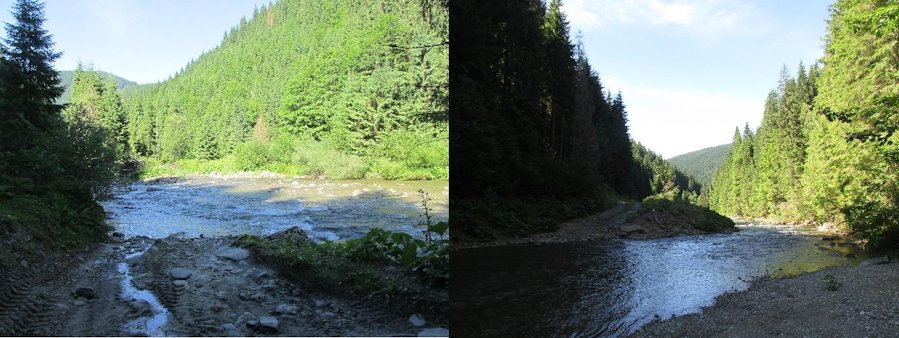
On the photo below one can clearly see two trails from a timber truck wheels that go down the tributary of the Black Cheremosh.
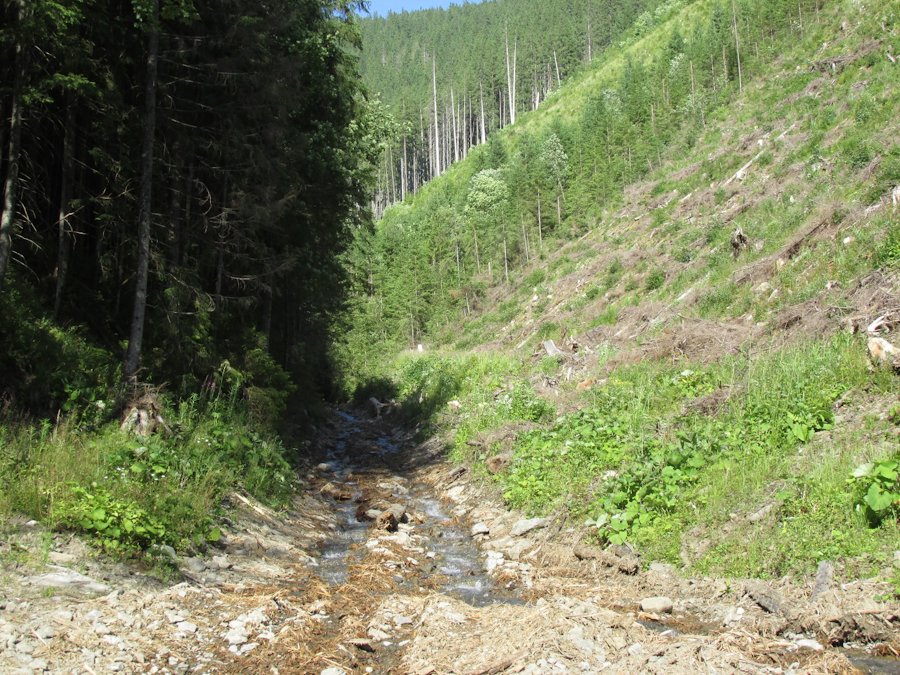
We gradually approach the 1st and 2nd quarters of the Burkutsky Forestry, where we decided to examine continuous sanitary felling and verify compliance of the logging plans posted on the web-site of Ivano-Frankivsk regional administration of forest and hunting management with real situation. We immediately discovered marked in the plan a continuous sanitary tree felling that was held a few months ago and now signs of erosion are visible. Tree trunks were cut in the river bed and therefore a number of stumps and remnants of tree trunks are left here blocking the river and bcausing destruction of the river beds and the threat of damaging river bridges during floods that come here regularly.
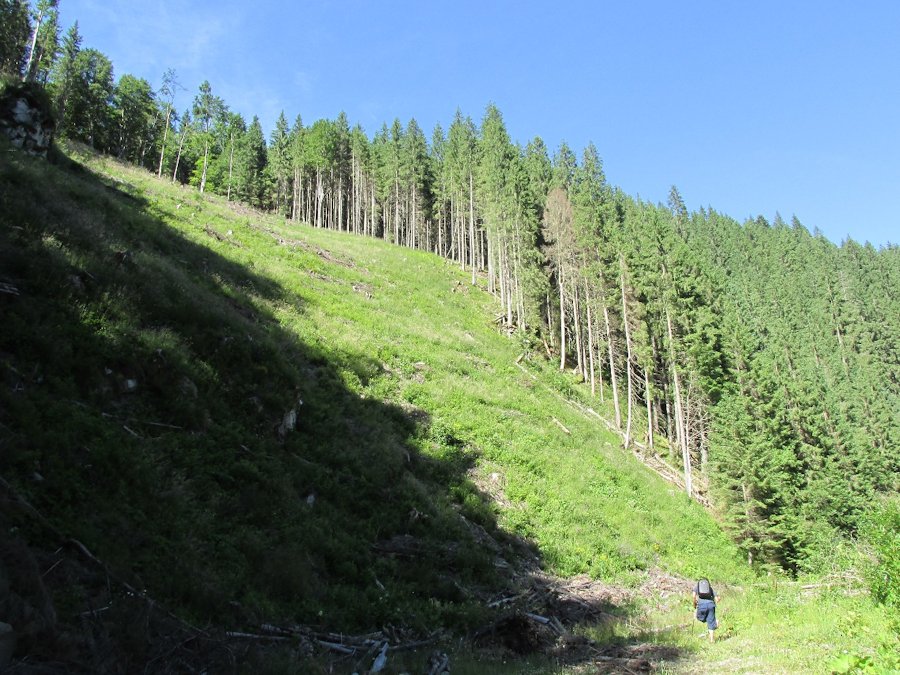
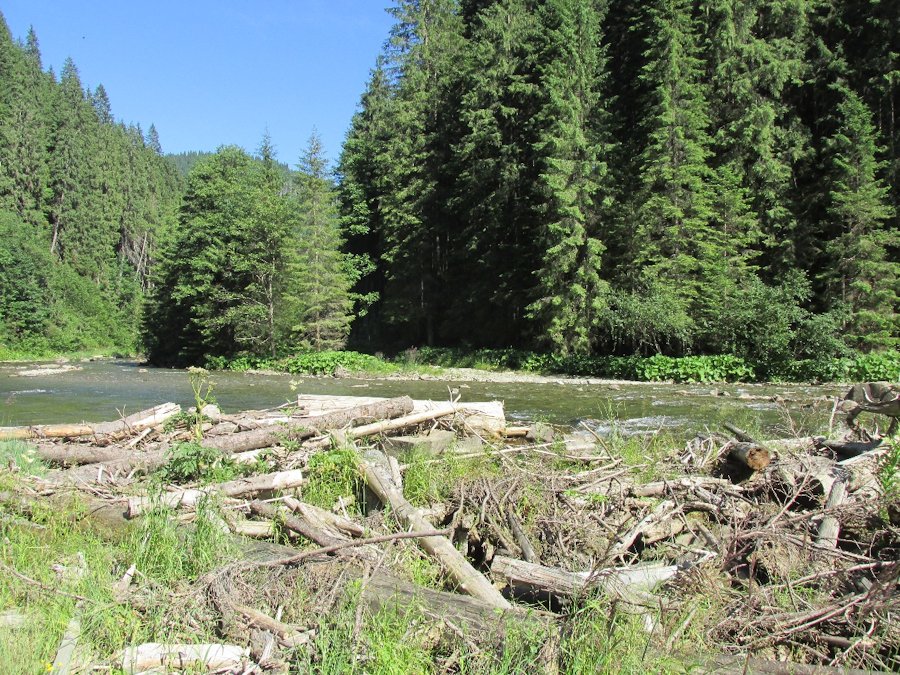
Following our route, we see another tree felling. We climb a steep slope.
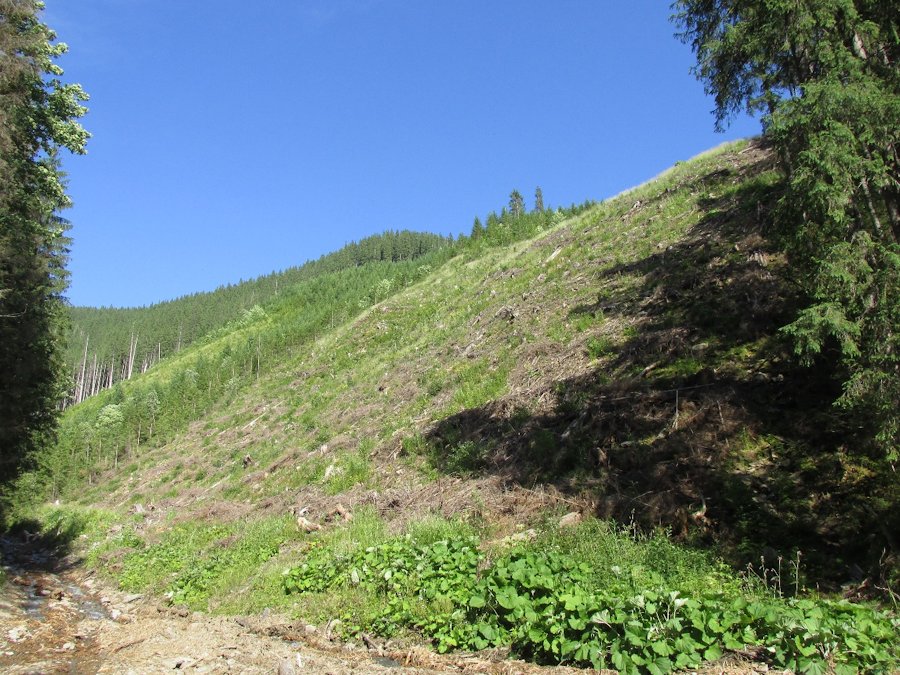
Our feet fail and get scratched between dry branches, piled a meter thick on the slope. Obviously, nobody does cleaning of forest residues here. One careless spark in such a hot weather may cause a break-out of a large-scale fire that may damage not only cubic meters and hectares of forest but also precious ecosystem, the forest floor with a supply of nutrients, herbage and moss, home to birds, deer, insects and more. Due to the inaccessibility of lands of the Burkutska forestry it is hardly possible to rely on timely arrival of fire fighters.
Forest coenosis is significant here. Forest groups next to area of forest felling are listed in the Green Book of Ukraine. As you can see in the photo below, the forest has a large layer of sphagnum moss. These mosses are common in Polyssia region, but in the Carpathians they are rare. They form a continuous thick loose carpet that easily absorbs water and thus regulates hydrological regime of the forest. Sphagnum-bilberry forests develop only on gleying (permanently wet) soils.
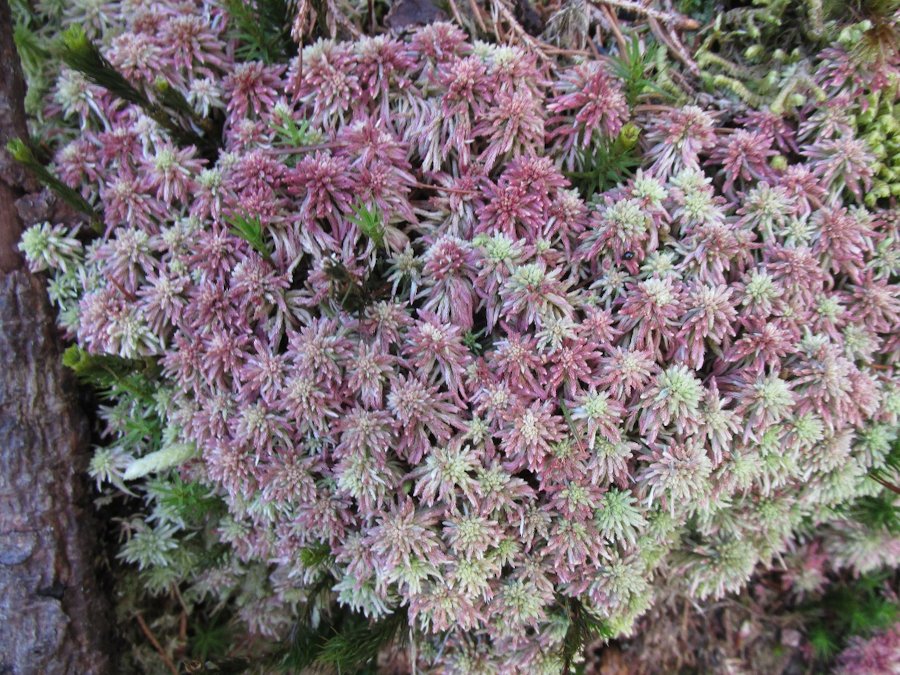
Spruce forest along with blueberries and sphagnum mosses form a unique group listed in the Green Book of Ukraine. In the foreground of the photo, along with mosses you can see a relic plant – ground pine. This species is vulnerable and is located in the Carpathian Mountains on the border area, just confined to waterlogged spruce-bilberry green moss forests listed in the Red Book of Ukraine. Forest logging in this area is prohibited with the special regime of the species preservation and protection.
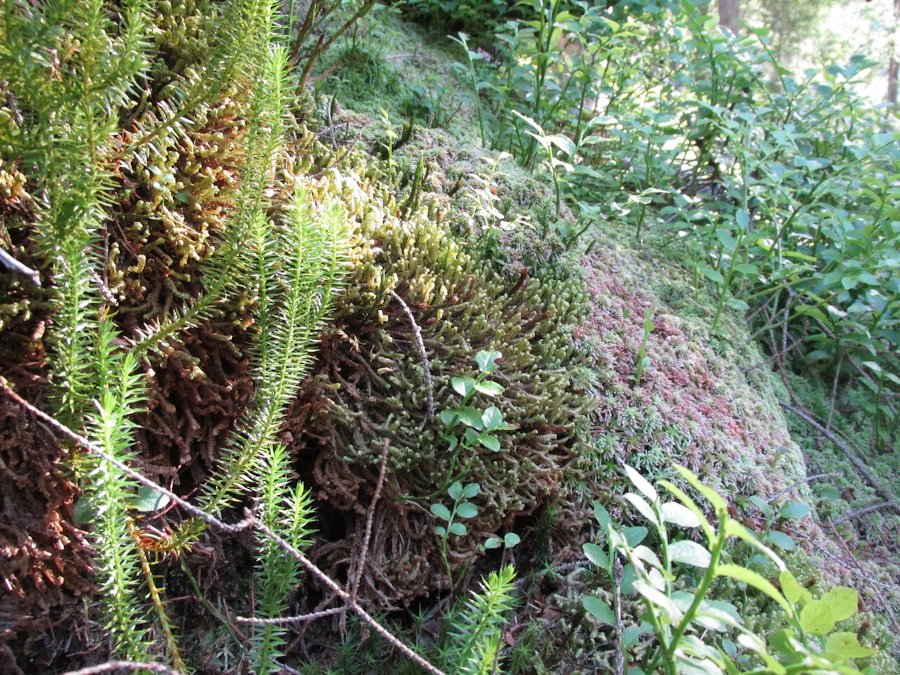
Currently EPL experts continue exploration of forest felling in the Carpathians and also analyze documentation of plans of forest management measures to verify legality of these measures.
.

